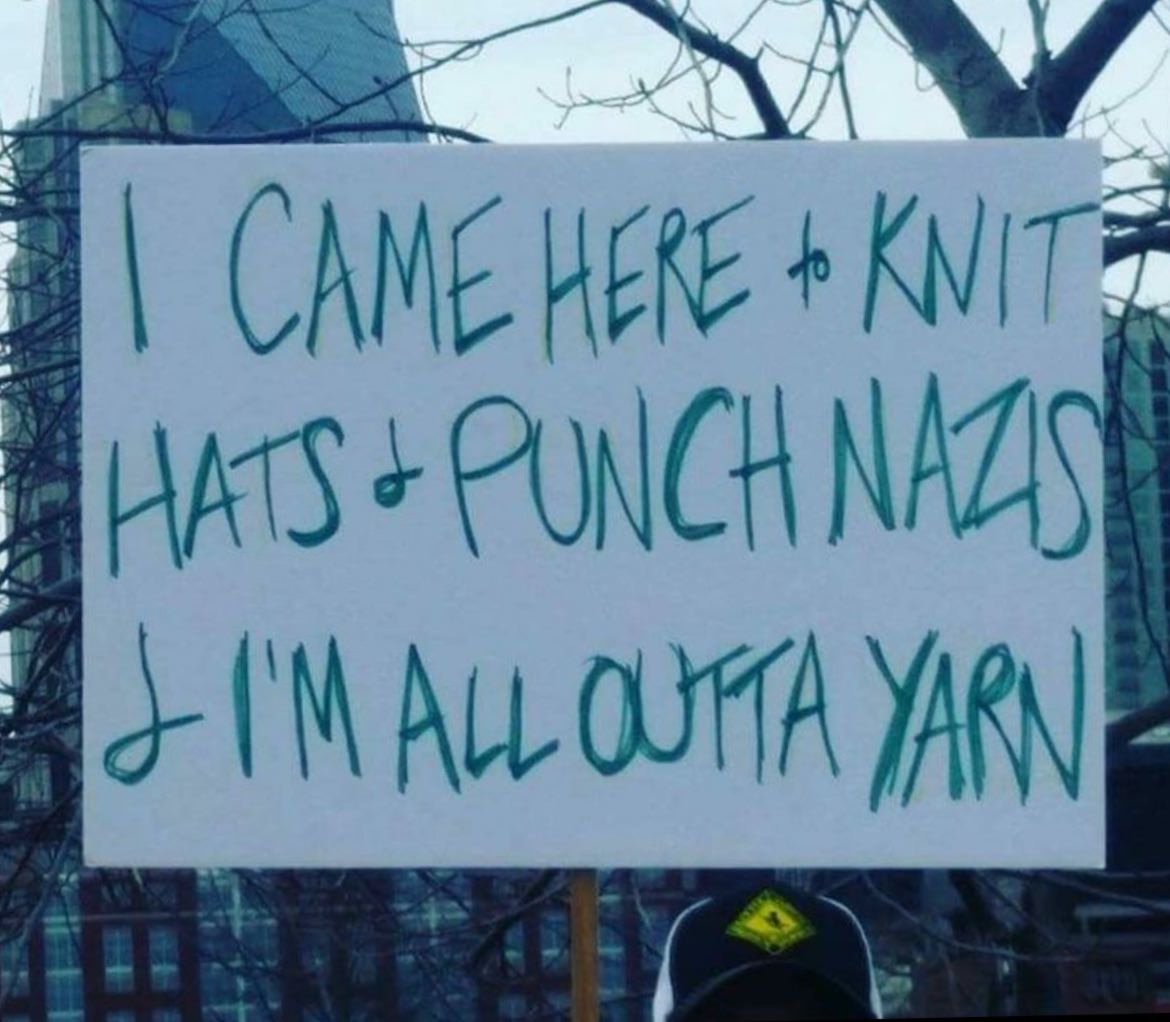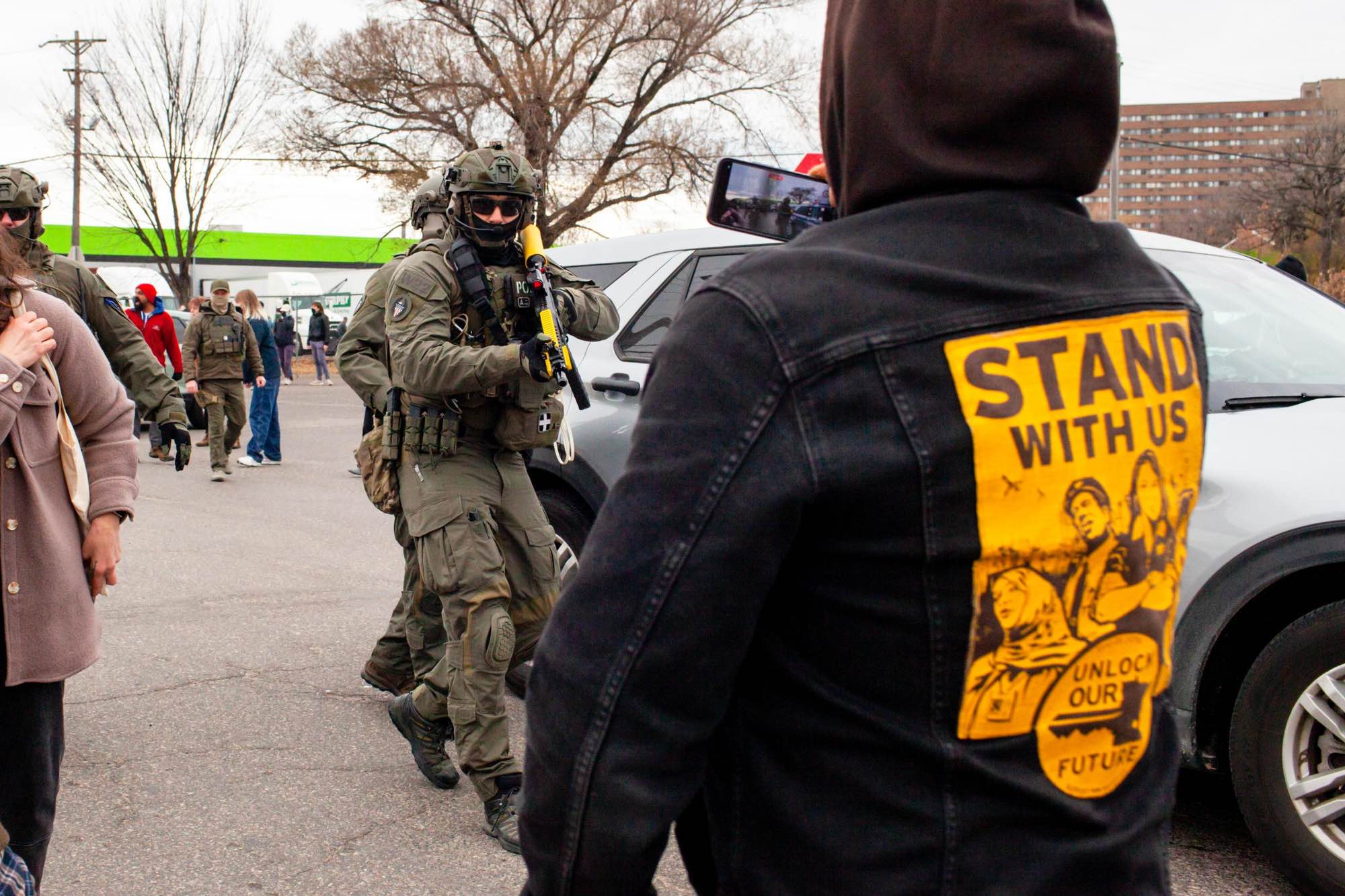
It’s time to strategize. Is it more realistic to set out to overturn the Muslim ban, halt further construction of the border wall, help our friends and loved ones evade ICE roundups, stop the DAPL and Keystone XL, protect our drinking water, slow down global warming, tame the financial sector and stop the police from killing people and defend abortion access—or to take down the government itself? Should we fight a thousand defensive battles—or a single offensive one?
In less than four weeks, the Trump administration has accomplished something that American radicals haven’t been able to do for almost 250 years: it has convinced the majority of the American people that the government is a public menace. Trump and his cronies have picked fights with Black people, Latinos and Latinas, Native Americans, Muslims, immigrants, feminists, environmentalists, radicals, progressives, liberals, and a swath of federal, state, and municipal employees—in short, with the better part of the population. For good measure, they appear to be trying to provoke a major terrorist attack in the United States in hopes that it would shore up their dubious mandate. Undoubtedly, I’m forgetting something. It’s been an eventful month.
Furthermore, the administration has antagonized the CIA, the NSA, and the Mexican and Chinese governments; aligned itself with Russia to such an extent as to create national security scandals; and threatened to upset the entire post-Cold War global order. On the public relations side, it is making up fantastic stories out of thin air and has randomly gone to war with CNN.
Consequently, the American corporate, political, industrial, financial, media, military, and intelligence elites are at cross purposes, deeply divided among themselves. Some factions are betting that neo-fascism is the wave of the future and that it will be good for business. Other factions would prefer to return to business as usual. Given the events of the last twenty-five days, it seems possible that the administration will overstep its authority and bring about a constitutional crisis at some point over the next four years, if not sooner. If such a “crisis of legitimacy” does develop, it is likely that the latter factions of the ruling class would prefer regime change to dictatorship.
I hate to resort to Game of Thrones references, but Donald Trump and Steve Bannon are acting the parts of Cersei Lannister and Maester Qyburn respectively: not only are they playing with fire, oblivious to the dragons circling on the horizon, but they consider themselves to be very clever.
If this is really how the administration wants to do things, they can bring it on. White conservatives and a small number of web-based reactionary activists versus people of color, white liberals, a seasoned cadre of radicals and progressives, and the vast majority of Millennials? Let’s do this. They may have more guns, but we definitely have more numbers. Home team bats last.
Trump and Bannon have had a few weeks to push people around. In doing so, they’ve backed themselves into a corner and alienated over half of the country. Now, it’s time to do like our grandparents taught us and punch these bullies in the face. Here are a few suggestions for how to do so—and what comes next.
Protest Won’t Change Anything—Resistance Will
Protest is so 2003, people. Resistance is the new black. It is all well and good for thousands or even millions of people to assemble in the street. However, doing so accomplishes nothing in and of itself, as many of us bitterly remember from the lead-up to the invasion of Iraq fourteen years ago. On the other hand, gathering at times and places where our presence impacts the day-to-day operations of essential infrastructure can accomplish a great deal, as many of us remember fondly from the airport occupations two weeks ago. This is the difference between symbolic protest and direct action, which anarchists have been pointing out for upwards of 150 years. Less protest, more action, please.
Seriously, there is no point in pleading with this government or registering our opposition to its policies. They truly could not care less what we think. We need to make it impossible for them to govern. We can do this. For the moment, it may be enough to simply start picking targets to shut down, sending out calls over Twitter, seeing how many people show up, and taking it from there. I think that the airport actions were the right idea—we just need to apply that model to some part of the government itself.
Take the Offensive
They always say that the best defense is a good offense, and it did just work out that way for the Patriots in the Super Bowl. The Trump administration is trying to send us scrambling in a thousand different directions at once. It’s a trap. They hope to prevent us from capitalizing on the fact that their government is out of step with the values and desires of most American people and holds questionable legitimacy in the eyes of millions.
It is true that many of us have to stay focused on solidarity work, mutual aid, and self-defense. There’s no way around that. However, the time has come to ask ourselves: under an extremely hostile administration, is it more realistic to set out to overturn the Muslim ban and halt further construction of the border wall, help our friends and loved ones evade ICE roundups and stay out of prison, stop the DAPL and Keystone XL, protect our drinking water and slow down global warming, tame the financial sector and stop the police from killing people and defend abortion access all at the same time—or to take down the government itself?
We may find that the only way to prevent everything from getting drastically worse is by going all in on revolution.
Tap the Powers of Millions
Huge segments of society are angry and afraid, full of fresh ideas and energy, open to radical perspectives, paying attention, well informed, struggling to survive, and ready to fight. I’ve never seen anything like it in my life.
Resistance to the Trump regime will succeed or fail depending on how effective we are at finding each other and making the most of our various strengths. We need great numbers of people to participate if we are going to prevail. No crack team of specialized activists can do this on their own. No judge or politician is going to set things right. Nobody can save us but ourselves. That should be more than enough.

Three Possible Futures
Suppose, then, that there is a crisis of legitimacy ahead for Trump. What are the likely scenarios, and how do we prepare? Let’s look ahead a little further since things have been happening so fast lately.
The most likely possibility is still that the Deep State (as represented by entrenched elements in the CIA, the neoconservatives in the Republican Party, etc.) will manage to rein Trump in somehow, permitting him to carry out the ordinary racist aspects of his program but preventing him from going overboard with economic protectionism, haphazard foreign policy, and collusion with Russia. Repression will keep pace with escalating social tensions as the law-abiding Left sells out protest movements in return for another shot at state power. In this scenario, we lose, Steve Bannon and the white nationalists lose, and the Deep State wins, stabilizing capitalism for another four years or more.
Those losses would be temporary, however—throughout such an administration, anarchists would compete with white nationalists for the allegiance of increasingly disillusioned sectors of the Left and Right. In such a scenario, it should be possible to make the case to white working people that the bankers and businessmen have bamboozled them once again by getting them to back Trump.
It is less likely—but possible—that Trump will face a real crisis of legitimacy. In this case, protest movements will rise to a boil, forcing the Deep State to choose between Trump’s presidency and the stability of the state itself. If the Deep State steps in to depose Trump, whether covertly or overtly, real social change may be on the table—but only if the momentum that drives events is coming from below, beyond the control of any party with a stake in state power. In this scenario, Steve Bannon and the white nationalists lose—at least temporarily—and we duke it out with the Deep State.
This scenario involves tremendous risks. Remember, this is basically what happened in Egypt in 2013 when the Egyptian military deposed Morsi and installed the strongman al-Sisi in his place—effectively bringing the so-called Arab Spring to a close and re-stabilizing totalitarianism in the Middle East. If we count on elements in the government to take care of the situation, they will do whatever they have to do to sideline or suppress radical activity—and people will look to the state to solve their problems for another full generation or more. On the other hand, if we proceed into open battle with the Deep State in conditions of upheaval, we had better have a great deal of the population behind us, and we had better do so in a way that doesn’t leave any space for white nationalists to regain their footing in opposition movements while we are reeling from repression.
Finally, it is possible that there will be a crisis of legitimacy but Trump will come out on top, using it to purge the opposition and wipe out protest movements. In this case, Steve Bannon and the white nationalists will win and everyone else will lose. This seems to be the least likely scenario—but most of us were surprised by Trump’s victory, too. In this case, it will be possible for Bannon and his ilk to portray anarchists as tools of the Deep State at precisely the same time as they are able to silence us with repression.
Reviewing these possibilities, a few things become clear. It is essential to organize in a way that distinguishes us from all state actors and leaves no space for the state to regain legitimacy; antifascism must mean opposition to the state itself, lest we topple Trump only to pave the way for an equally authoritarian regime. The sooner a crisis comes, the better, before Trump, the Deep State, and the Democratic opposition have the chance to get their feet under them; at the same time, we have considerable work to do making our proposals comprehensible to the general public. Last but not least, if regime change takes place, the momentum must come from the streets, not from within the halls of power. As usual, we’ll get out of revolution what we put into it, nothing more.
In any case, our work is cut out for us and the stakes are double or nothing. We’ll see you at the front.






